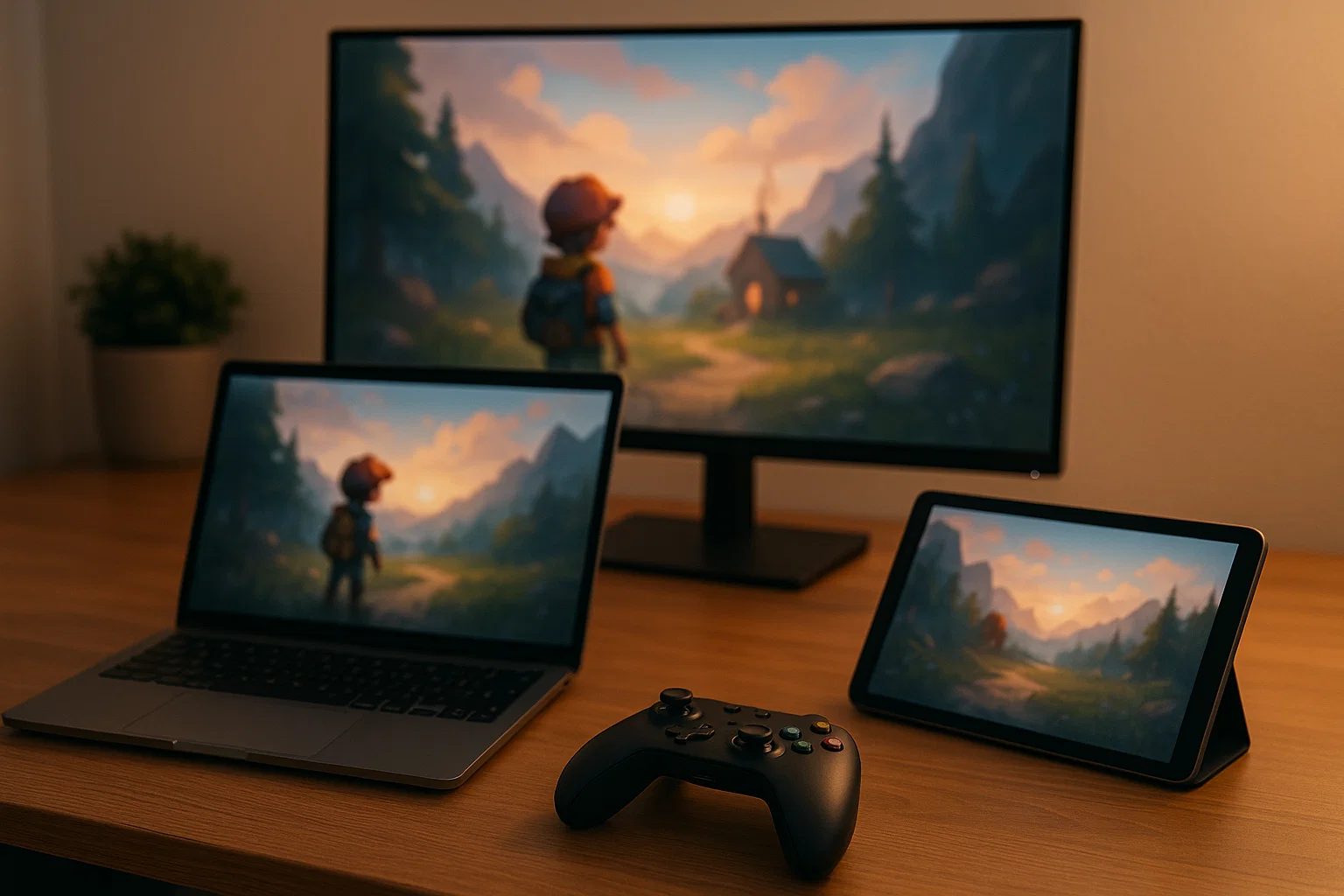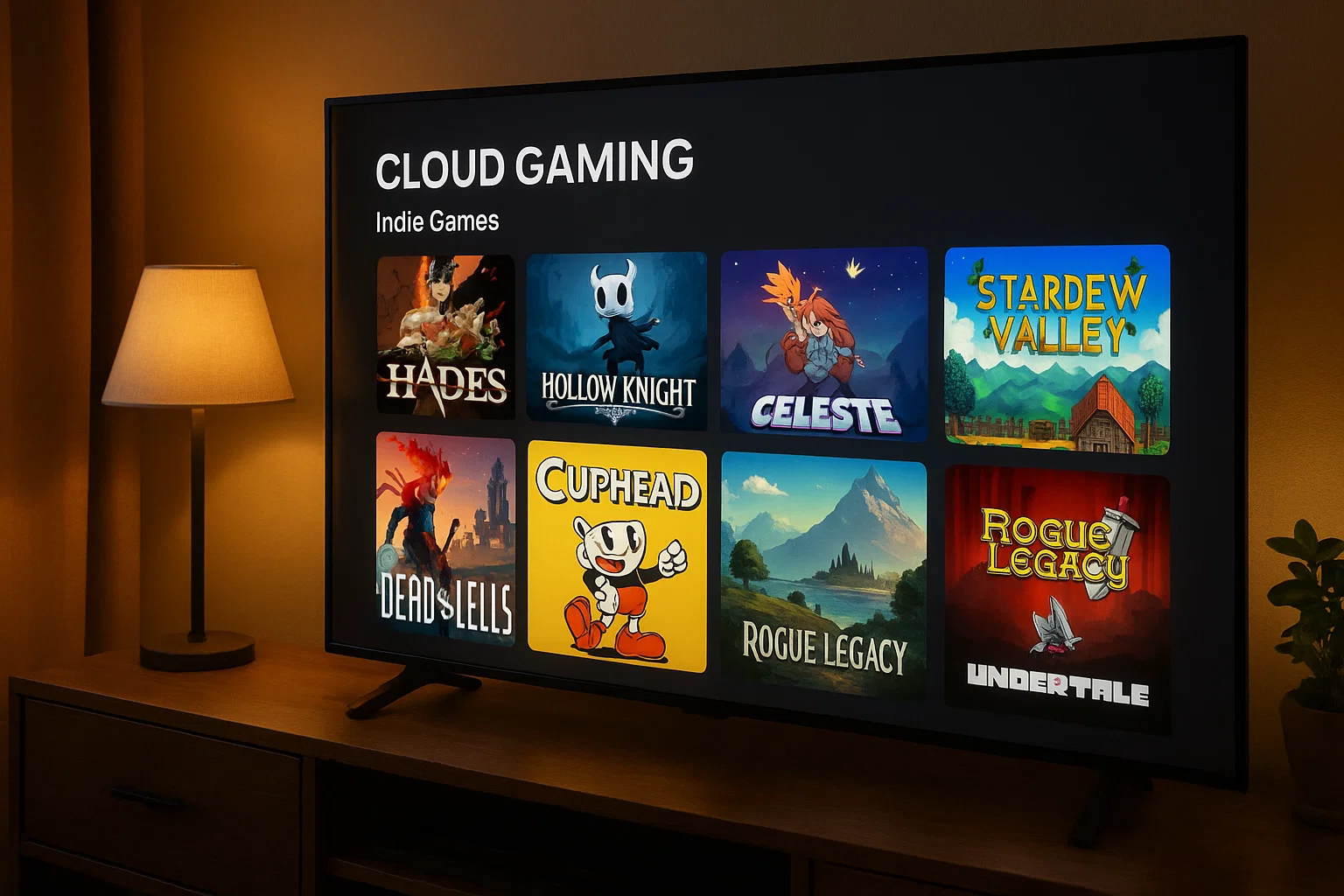
A Quiet Shift You Can Feel Even Before You Name It
If you’ve been around games long enough, you can sense when the ground is moving before anyone points to the fault line. A lot of people felt that with cloud gaming. Not because some corporate slide deck said it would “reshape the industry,” but because one day you booted up a game on your phone that didn’t belong on a phone. Or your friend joined your co-op run from a battered Chromebook that should’ve wheezed under the load. And suddenly the old hardware rules didn’t matter as much.
That’s especially true with indie games. They’ve always been the little experiments that wander into places big-budget titles never try. Now they’re wandering into the cloud, slipping across devices, and in many cases inviting players from different ecosystems to play together like the walls never existed.
That’s the magic baked inside the idea of cross-platform cloud gaming indie titles. Not a buzzword string a quiet promise that games don’t need to stay tied to the box they were born on, or the wallet that bought them.
Let’s take our time and unpack how this shift actually works, why indie creators are leaning into it, and where cross-play fits into the story. It’s less complicated than it sounds once you follow the human thread behind it.
Why Indie Games Fit So Naturally Into the Cloud
If you look at the storefronts on Xbox Cloud Gaming, GeForce NOW, Amazon Luna, even PlayStation’s streaming service, there’s a pattern you can’t miss. Indie titles blend right in. They’re lightweight, they’re experimental, and they rarely need a graphics card that sounds like a jet engine at takeoff.
But there’s something deeper here.
Indie developers have always stretched their reach through accessibility simple input schemes, hand-illustrated art, tight optimization. That philosophy lands softly in the cloud. A game that runs well on modest hardware usually streams well too. And for players, the barrier to entry almost disappears. You don’t need a new PC. You don’t need a new console. You don’t even need a download.
Just an internet connection that doesn’t betray you at the worst possible moment.
I once watched a friend fire up Hollow Knight during a lunch break using a mid-range smartphone and a Bluetooth controller. He wasn’t showing off. He was just filling an hour. But the scene stuck with me because it felt like a glimpse of a gaming future where the smallest device in your pocket still has a direct door into a massive world.
That’s the indie cloud experience in one snapshot: worlds that go anywhere you go, without the friction we used to accept as normal.
Where Cross-Play Slips Into the Conversation Naturally
Cross-play was the missing piece for years. Everyone wanted it; no one wanted to go first. Yet as cloud services grew, something interesting happened. The lines between platforms blurred faster than publishers expected. When a game is streaming from a remote machine, the “platform” becomes less about the local device and more about the service delivering it.
That shift makes cross-play feel almost inevitable.
So can you cross-play on cloud gaming?
Yes when the game supports it. Cloud alone doesn’t magically guarantee cross-play, but it removes hardware friction and pushes developers toward unified ecosystems. Many cloud-supported indies already embrace it:
• Fortnite (Epic)
• Rocket League (Psyonix)
• Dead Cells
• Brawlhalla
• Among Us
When you think about it, cross-play is just an agreement:
“Let players meet, regardless of where they came from.”
Cloud gaming, at its best, reinforces that idea by stripping away the old device-based hierarchy.
And for indies, cross-play isn’t just a feature it’s survival. A small multiplayer game needs a healthy player pool. Cross-play props that up. Cloud multiplies it. Put them together and you get small teams reaching global audiences without rewriting their code for ten different platforms.
What the Best Cloud Platforms Actually Offer Indie Players
Ask someone which cloud platform is “best,” and you’ll get an answer shaped by the hardware sitting in their house. But if we focus strictly on indie titles and cross-device fluidity, a few services stand out.
GeForce NOW
This one’s the old soul of the bunch not flashy, but practical. It lets you use your existing Steam, Epic, or Ubisoft libraries. If you already own a mountain of indie games from sales you barely remember, GeForce NOW treats that history with respect. Its latency is low enough that fast-paced indie titles still feel lively.
Xbox Cloud Gaming (Game Pass Ultimate)
This is where convenience quietly wins. You pay once, you stream dozens of curated indies instantly. Game Pass rotates gems constantly cozy games, atmospheric side-scrollers, experimental stories. It also leans heavily into cross-play thanks to Xbox’s network design.
Amazon Luna
Luna’s library is smaller, but the indie selection feels handpicked. If you enjoy discovering smaller, quieter titles, Luna has a knack for surfacing them. It also runs surprisingly smoothly on mid-range hardware.
PlayStation Plus Cloud Streaming
PlayStation’s cloud path is narrower but still meaningful. Not every indie makes the journey, but when they do, they sit alongside Sony’s narrative-driven catalogue a different flavor entirely.
Each service feels like a different route to the same idea: gaming without walls. You don’t need to commit to one unless you want that ecosystem’s perks. And the ecosystem matters less when the game itself is not tied to your hardware.

Where the Indie Community Stands on Cross-Platform Support
The beautiful, frustrating truth about indie development is that every studio is different. Some jump at the idea of cross-play. Others want to keep scope small and manageable. But across interviews and dev logs, a pattern keeps emerging:
If the multiplayer system can be unified without breaking the team, cross-play becomes a natural choice.
Devs know players want it. They know fragmentation kills momentum. And cloud distribution makes the case even stronger because players arrive from devices the studio never explicitly targeted.
I’ve heard small teams mention unexpected waves of players arriving from TV apps or old Chromebooks. That’s the charm of cloud gaming: you get audiences who treat hardware like background noise.
Indie developers aren’t blind to that. They see engagement rise when friction falls.
A Closer Look at the Questions People Keep Asking
1. “Can I cross play on cloud gaming?”
You can, but only if the game supports cross-play at the developer level. Cloud services don’t force it they simply make it easier for studios to say yes.
2. “What is the best platform for indie games?”
If you want a deep library tied to existing purchases → GeForce NOW
If you want curated indie discovery → Xbox Cloud Gaming
If you want low-hassle streaming on ordinary devices → Amazon Luna
3. “What COD games are cross-platform?”
Nearly all recent mainline Call of Duty entries support cross-play:
• Modern Warfare (2019)
• Modern Warfare II (2022)
• Modern Warfare III (2023)
• Warzone (all major versions)
They’re not indie games, but they highlight how standardized cross-play has become.
4. “What’s the best cloud platform?”
Depends on what you value price, library size, ownership model, or device flexibility. No single winner yet, but the trend points toward broader compatibility and smoother streaming ahead.
Where Cloud Gaming Indie Titles Might Go Next
You can already see the next wave forming if you look at how players behave rather than the marketing slides. People want to bounce between devices without losing progress. They want games that adapt to their life not the other way around.
Indie games fit that pace perfectly.
There’s a growing belief among devs that the most portable games may not be the ones written for mobiles, but the ones streamed from powerful hardware sitting miles away. That changes how studios design menus, difficulty curves, even control schemes. When games can be played anywhere, the question quietly becomes:
“How do we make them meaningful anywhere?”
We might start seeing cloud-first indies, built with streaming latency in mind, built with universal save states, built with cross-play from day one. Not because it’s trendy, but because it matches how people actually live.
A Thought Before We Wrap
When you zoom out, the rise of cross-platform cloud gaming indie titles feels less like a technological revolution and more like a cultural correction. Gamers were always meant to play together. Devices got in the way. Licenses got in the way. Walled gardens got in the way.
Cloud gaming, with all its flaws and growing pains, is quietly unknotting that mess. Indie developers, being unburdened by prestige or tradition, are often the first ones to walk through the newly opened doors.
Maybe that’s why this space feels so alive right now. It’s not just better tech it’s better access. Better reach. Better chances for small teams to find big audiences.
And maybe that’s the real story worth following not which service wins, but how many more people get to join in.
If you ask me, that’s a future worth rooting for.